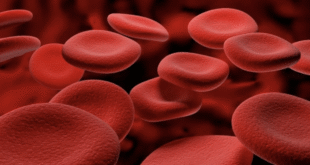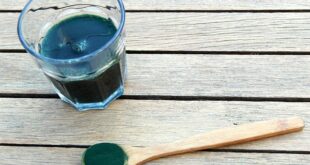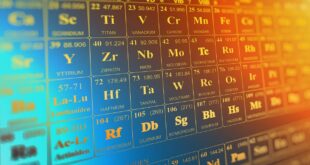Abstract
Coenzyme Q10, isolated from bovine heart mitochondria by “Dr. Fredrick Crane” in 1957, is a vitamin-like organic compound. It’s scientific name is 2,3 dimethoxy-5methyl-6decaprenyl benzoquinane. It is also known as ubiquinone. Ubiquinone and ubiquinol are derived from “ubiquitous quinone”, which means “available everywhere” in Latin. This name is given because in all cells also exist. It plays a huge role in maintaining our body’s energy. It is found in mitochondria, so it is found in every cell. It is mostly found in heart cells. It is cell regenerative and plays a role in healthy aging. It improves the functions of the left side of the heart (most importantly, the pump function). Coenzyme Q deficiency has been described as good for gene mutation, aging, and cancer. Correction of the deficiency requires higher than normal coenzyme Q supplementation. [8] It controls hypertension. [1] Cardiovascular diseases are the main study area of CoQ10. This article examines the scientific informations about the biochemical properties, functions, and benefits of CoQ10.
Keywords: Coenzyme Q10, CoQ10, Ubiquinone, Ubiquinol
I. Introduction
Coenzyme Q10, which will be mentioned as a supplement and its effects on the body, is known to strengthen immunity also. It is one of the immune-boosting supplements with increased interest in strengthening immunity in COVID-19. During this pandemic process, the importance of strong immunity has been understood. For this reason, people have started to work on strengthening the immune system. It has been one of the supplements taken to strengthen it, but not everyone knows exactly what it does. It is a organic compound that everyone can consume as a supplement when its real benefits and effects on the body are fully understood. Because the benefit to the skin is also great. One married couple said that they owed the beauty of their skin entirely to Coenzyme Q10. Today, with the technological development and the increasing interest in supplements, people have become interested in vitamins and supplements. Most people who want to live healthy and delay aging have already started using this vitamin! Coenzyme Q10 is a compound that can be produced spontaneously in animals and humans, but its production decreases after 30-40 years of age. Humans also decrease the amount of coenzyme Q10 in the body depending on age and various factors. The fact that it provides energy to our body, is very good for cardiovascular diseases and reduces the effects of radiotherapy in cancer patients has increased the interest in it.
II. Definiton and Function of Coenzyme Q10
CoQ10 is a compound with the molecular formula C59H90O4. 10 in CoQ10 describes isoprene repeats. It is also necessary for all human tissue health for our organism. Its deficiency effects even breathing. It has been found that CoQ10 can help prevent free radical damage. It is a very powerful antioxidant. It has been found that it is good for aging, obesity, migraine, hypertension and cancer. It is cell regenerative.
There are studies suggesting that there is no crisis and chest pains are reduced with the use of CoQ10 for 3 days after heart attack. In diabetic patients, high blood sugar levels have been shown to decrease with CoQ10. However, blood thinners can interact with blood pressure pills and cause clots. Supplements shouldn’t be taken without asking the doctor. [2] It is soluble in fat. For this reason, it is recommended to be taken after fatty meals as a supplement. It can be found in both reduced form and oxidized form. It is a redox molecule.
It is the electron carrier of the respiratory chain in mitochondria. Since it is a redox molecule, it enables it to move its electrons to I, II, III by reduction and oxidation. Meanwhile, ATP is produced. Thus, coenzyme Q10 plays an important role in our energy activity, energy production. [1] Regular intake of CoQ10 physically increases performance. It strengthens the immune system. When taken as a supplement, 30 to 90 grams per day is recommended. t is similar to vitamin K. It’s consumption with vitamin E and alpha lipoic acid is effective. It’s content in the body is between 500-1500 mg. It should be consumed knowing that it decreases with age. Ubiquinol is the coenzyme Q10 with 2 electrons. As the body converts what we eat into energy, it converts coenzyme Q10 into ubiquinole. The absorption of coenzyme Q10 can be increased by consuming healthy fats. After the age of 30-40, it has been determined that its proportion in the body has decreased significantly. [3] Although similar to vitamin K, CoQ10 is not a vitamin as it can be produced in our organism. Ubiquinol is the reduced form of CoQ10 and can provide many transformations and regenerations in the body. It is known to have effects on gene expression and cell growth even. Dosages of 600 to 3000 mg have been observed in some diseases such as Parkinson’s. CoQ10 reduces oxidative stress, which is one of the biggest causes of death in heart problems. Patients with heart failure have a measurable CoQ10 deficiency in both blood and myocardial tissue. [4]
IV. CoQ10 and Diseases
Cardiovascular Diseases
Deaths from heart failure and cardiovascular disorders are on the increment. For this reason, the search for a remedy has also increased. Various studies have proven that CoQ10 is very beneficial in cardiovascular disorders. CoQ10 has been very useful both before and after a heart attack. CoQ10 use for a period of time after a heart attack reduced chest pain. Studies have been conducted that it improves the pump function of the heart and is good for hypertension. Scientists have seen a significant drop in systolic blood pressure as a result of their work on CoQ10. They showed that CoQ10 reduces the need for medicine. In a controlled multicenter study (Q-SYMBIO study) involving 420 patients, applying a 2-year treatment with CoenzymeQ10 (300 mg / day) showed an improvement and a reduction in cardiovascular disease symptoms. [5] Oxidative stress and loss of mitochondria function are also symptoms of heart failure. [10]
Diabetes
CoQ10 has been suggested for the treatment of type 2 diabetes due to its powerful antioxidant properties. The use of CoQ10 (260 mg / day for 11 weeks), used for treatment in patients with type 2 diabetes, reduced fasting plasma glucose levels without changes in glucose-containing hemoglobin (HbA1c). Thus, we can say that it is beneficial in diabetes. [5]
Other Diseases
Oxidative stress is the enemy of many things like kidneys. One of the most capable of dealing with this is the Coenzyme Q10. Some experiments on rats have shown that ubiquinol has a protective effect on the kidneys. (Ishikawa et al., 2011). In a study of 65 patients on dialysis, given large amounts of CoQ10 (1200 mg / day) supplementation, it was observed that the plasma level of F2- isoprostane decreased, indicative of a decrease in oxidative stress. CoQ10 supplementation also provides protection against the progression of oxidative damage and mitochondrial disorders in patients with Down syndrome. Some studies, and many studies mentioned in this article, have shown that CoQ can preserve mitochondria function and reduce neuronal loss in Parkinson’s disease. Even high doses of CoQ10 (1200-2400 mg / day) have been observed to be safe and well administered to humans. (However, never take supplements without consulting your doctor).[5] Studies on the effect of CoQ10 on physical performance have shown that it improves feelings of fatigue and physical performance. It also counteracts exercise-related damage. CoQ10 has also been observed to relieve headaches in adults. It is also good for migraine. There are studies showing that CoQ10, which also plays a major role in oxidative phosphorylation, prevents wrinkle formation caused by ultraviolet B. Aging was prevented by CoQ10, contributed to the protection of the structure of the skin against degradation and led to the renewal of wrinkled skin. [6]
III. Obtaining CoQ10
Coenzyme Q10 is synthesized in humans with Acetyl-CoA additives in such a way that cholesterol also occurs (Figure 3). The place where coenzyme Q10 synthesis begins is the endoplasmic reticulum, and the place where it ends is the Golgi apparatus. From there, it reaches different parts of the cell. Coenzyme Q10 is mostly found in the membrane of mitochondria. In humans, it is mostly found in the heart (110 μg / g tissue), then in the kidney (70 μg / g tissue) and then in the liver (60 μg / g tissue), with the lowest (8 μg / g) in the lung tissues. Except for the brain and lungs, most of our organism contains coenzyme Q10. It has two sources, endogenous and exogenous. Our body is also found endogenously. It is taken exogenously. This can be with the help of supplements or foods. Coenzyme Q10 is found in foods such as red meat, green leafy vegetables, and soy. Foods rich in coenzyme Q10 are specified as red meat (8 – 200 μg / g) and fish (4 – 64 μg / g), by looking at the high amount of CoQ10 in the mitochondria in the muscle tissue. Foods containing 20 μg and more CoQ10, rich in CoQ10, and less than 20 μg CoQ10 are poor foods. It has been reported that pig heart contains a very high proportion of coenzyme Q10 (260 – 280 μg / g). There are methods such as extraction method obtained from animal tissues, chemical synthesis and extraction from microorganisms. Coenzyme Q10 is not preferred to be obtained from animal tissues. It is known that the reason why coenzyme Q10 can be obtained from plant foods such as soybeans is also possible but not preferred because of its cost. Coenzyme Q10 is said to be found in bacterial cells such as Pseudomonas denitrificans and yeasts such as Neurospora crassa. It has been found that coenzyme Q10 can be obtained at a high rate in cells such as Rhodotorula, Cryptococcus, Sporobolomyces, Candida, which are the yeasts of Alcaligenes produced in the nutrient medium. In addition, in another patent study and prokaryotic microorganisms (eg.Methylobacterium extorquens) have the ability to produce isoprenoid compounds (Ubiquinone). Coenzyme Q10 production is also possible using a microorganism belonging to the Bulleromyces species. [1]
V. Summary and conclusions
CoQ10 supplements are available from pharmacies. CoQ10 deficiency has been associated with many diseases such as heart failure, hypertension, and Parkinson’s disease. If you want a meal with lots of CoQ10, you can choose green lentils, mushrooms and spinach at the same time. You can consume broccoli. By eating a variety of vegetables and fruits, you can be sure you’re getting CoQ10 and other nutrients into your body. If you are over the age of 30, you can take 60 or 100 mg CoQ10 every day. If you have a high risk of heart disease, high blood pressure, high cholesterol, you can take 100 or 300 mg a day. [7] The aging process means a deterioration in mitochondrial function, a decrease in antioxidant products and an increase in oxidative stress. Coenzyme Q10 has the ability to balance all of these. Therefore, it is good for all of them. [9]
VI. References
[1] and Fig2,3,4 BIOAVAILABILITY AND IMPORTANCE OF COENZYME Q10 IN NUTRITION AND HEALTH,Pınar Ercan, Sedef Nehir El Ege Üniversitesi, Mühendislik Fakültesi, Gıda Mühendisliği Bölümü,Yıl: 2010, Cilt:3, Sayı:2, Sayfa:192-200. [2] and Fig1. pubchem.ncbi.nlm.nih.gov/compound/5281915 [3] J Pharm Bioallied Sci. 2011 Jul-Sep; 3(3): 466–467doi: 10.4103/0975-7406.84471PMCID: PMC3178961PMID: 21966 [4] Fig5. Coenzyme Q10 ,Albert E. Raizner, MD, HOUSTON METHODIST DEBAKEY HEART AND VASCULAR CENTER, HOUSTON METHODIST HOSPITAL, HOUSTON, TEXAS. [5] Coenzyme Q10 Supplementation in Aging and Disease,Juan D. Hernández-Camacho1, Michel Bernier2, Guillermo López-Lluch1 and Plácido Navas 1* ,1 Centro Andaluz de Biología del Desarrollo and CIBERER, Instituto de Salud Carlos III, Universidad Pablo de Olavide-CSIC-JA, Sevilla, Spain, 2 Translational Gerontology Branch, National Institute on Aging, National Institutes of Health, Baltimore, MD, United States. https://doi.org/10.3389/fphys.2018.00044 [6] Clinical aspects of coenzyme Q10: An update Gian Paolo Littarru, M.D., Ph.D.,* and Luca Tiano, Ph.D. Department of Biochemistry, Biology and Genetics, Polytechnic University of the Marche, Ancona, Italy. August 10, 2009; accepted August 13, 2009. [7] Coenzyme Q10: Is There a Clinical Role and a Case for Measurement? *Sarah L Molyneux,1 Joanna M Young,2 Christopher M Florkowski,1,2 Michael Lever,1 Peter M George.1 Clinical Biochemistry Unit, Canterbury Health Laboratories, 2Lipid and Diabetes Research Group, Christchurch Hospital, Christchurch 8140, New Zealand. [8]Biochemical Functions of Coenzyme Q10 Frederick L. Crane, PhD. Department of Biological Sciences, Purdue University, West Lafayette, Indiana [9]Biology (Basel). 2019 Jun; 8(2): 28. 2019 May 11. doi: 10.3390/biology8020028 PMCID: PMC6627360 PMID: 31083534 CoQ10 and Aging. Isabella Peixoto de Barcelos1 and Richard H. Haas1,2 [10] Clinical Evidence for Q10 Coenzyme Supplementation in Heart Failure: From Energetics to Functional Improvement Anna Di Lorenzo 1 , Gabriella Iannuzzo 2 , Alessandro Parlato
1 , Gianluigi Cuomo 1 , Crescenzo Testa 1 , Marta Coppola 1 , Giuseppe D’Ambrosio
1 , Domenico Alessandro Oliviero 1 , Silvia Sarullo 3 , Giuseppe Vitale 3 , Cinzia Nugara
3 , Filippo M Sarullo 3 , Francesco Giallauria PMID: 32349341 PMCID: PMC7287951 DOI: 10.3390/jcm9051266
 Genetikçe Everything about science.
Genetikçe Everything about science.




